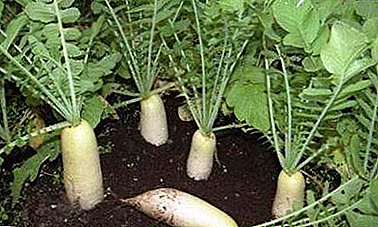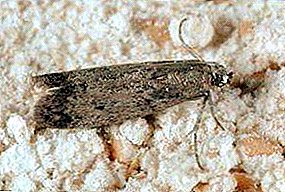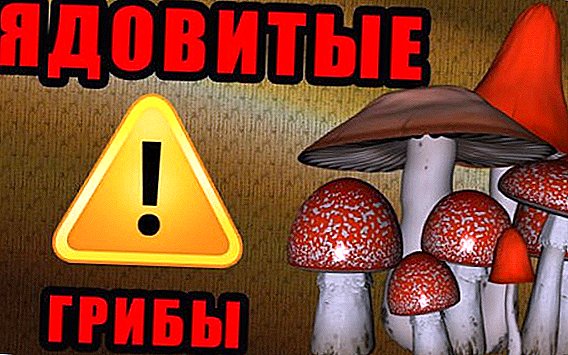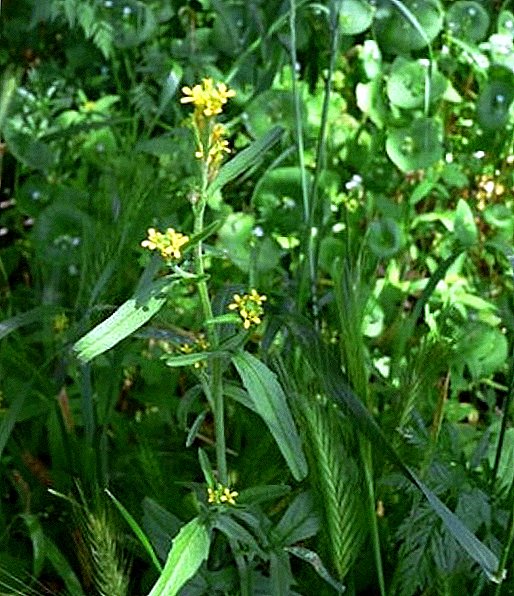 Although the musk ox is a close relative of ordinary cows and goats, this animal looks like an exotic stranger from the past. The strange appearance and authentic features in its anatomy remind us of the long past times of the ice ages. Meanwhile, the musk oxen in our time have spread over a large area and are not going to die out at all.
Although the musk ox is a close relative of ordinary cows and goats, this animal looks like an exotic stranger from the past. The strange appearance and authentic features in its anatomy remind us of the long past times of the ice ages. Meanwhile, the musk oxen in our time have spread over a large area and are not going to die out at all.
Who is the musk ox
Modern musk oxen (their second most popular name) are descended from descended from the Himalayas to the territory of modern Siberia and northern Eurasia, the pedigree, which became extinct with the start of warming in the late Pleistocene. A little later, the musk oxen themselves began to die of heat and a number of other reasons. However, since the temperature in the Far North was acceptable for them, they still managed to survive, even with fairly thinned rows, to our days.
Did you know? Despite the second name of these animals - musk ox, their bodies do not and never had musk glands.
It is believed that to the place of its current habitat (Alaska, part of Greenland and the island between them) musk oxen got as a result of migration due to warming. They traveled to the side where the temperature was stable and they eventually ended up on the territory occupied by them through the Bering land bridge, first to North America and then to Greenland.  Modern science has two subspecies of this genus of animals - Ovibos moschatus moschatus and Ovibos moschatus wardi, which have only minor external differences. All other comparison parameters are the same; in the wild, they are even able to live in the same herd.
Modern science has two subspecies of this genus of animals - Ovibos moschatus moschatus and Ovibos moschatus wardi, which have only minor external differences. All other comparison parameters are the same; in the wild, they are even able to live in the same herd.
Read also about wild bulls in nature.
Appearance
The appearance of musk oxen was formed under the influence of a harsh climate. Every detail took place as a result of a long adaptation and was designed primarily for a long stay in conditions of extreme cold. For example, they have practically no sharply protruding parts of the body above the body - this minimizes the process of heat transfer.
These animals are quite pronounced sexual dimorphism. First of all, the horns of the males are much stronger and more massive than the females. Also, females can be distinguished by the area of white fluff, located between the horns, and the absence of thickening at their base.  Indicators males:
Indicators males:
- height at withers - 130-140 cm;
- weight - 250-650 kg.
Indicators of females:
- height at withers - almost never exceeds 120 cm.
- weight - rarely exceeds 210 kg.
Important! For musk oxen living in farm conditions, large sizes are characteristic: males reach 650 kg, females 300 kg.
Features of appearance:
- The head has large dimensions. From the base of the forehead comes a pair of rounded at the beginning downwards, and then up and out of the horns. Horns are not reset in the first six years of life and are actively used by animals to defend against predators and fight with each other.
- The eyes are arranged symmetrically, most often dark brown.
- The ears of musk oxen are small (up to 6 cm).
- In the area of the shoulder girdle, the musk oxen have some semblance of a hump, a scruff, which at a smooth angle turns into a flat straight back.
- Limbs strong; the rear ones are longer than the front ones, which is necessary for moving in mountainous conditions.
- The mountains are adapted and hoofs, which have a smooth texture, large size and rounded, flattened shape. The hooves located on the front legs are much wider than on the rear ones.
- These animals have a tail, but it is very short (only about 15 cm) and is completely hidden under the fur.

Wool characteristics
Musk oxen - owners of very long and thick wool, which has excellent thermal insulation (it is six times warmer than the sheep). This property gives it the so-called Giviot - in fact, it is a wool of the second order, which grows under the surface layer and has a structure thinner than cashmere. With the onset of the warm season, it is reset, and by the time of the new cooling it grows again.
Did you know? The indigenous inhabitants of the areas inhabited by wild musk oxen collect the giviot thrown by them in the summer and use it for trade and handicrafts.
The color of wool is most often represented by a shade of brown or black. An arbitrary combination of different shades of these colors is possible, but more often the brown hair on the back gradually darkens, turning into black closer to the legs. The scalp hides the body almost completely, exposing only the horns, the nose, the lips and the hooves. The maximum length of the coat is marked on the neck, and the minimum - on the legs.  In the warm season, the wool of the first order becomes much shorter than in winter (on average 2.5 times) due to the shedding process. The flow of molting depends to the greatest extent on what climate and forage base it takes. Elderly musk oxen and pregnant females, as a rule, end up shedding much later than their brethren. In the less active phase, hair change of the first order occurs throughout the year.
In the warm season, the wool of the first order becomes much shorter than in winter (on average 2.5 times) due to the shedding process. The flow of molting depends to the greatest extent on what climate and forage base it takes. Elderly musk oxen and pregnant females, as a rule, end up shedding much later than their brethren. In the less active phase, hair change of the first order occurs throughout the year. 
Where, in what natural zone dwells
In a warm climate, the oxen cannot live normally, as the undercoat will constantly cause severe overheating. That is why the only suitable place for them is the cold polar lands. And in view of such anatomical features as the specific structure of the legs and hooves, terrain with a predominance of mountains and hills is most suitable for musk oxen.
The present natural habitat is limited to western and eastern Greenland and the northern part of North America. They were also brought to nearby islands, which have suitable terrain and forage base (north of Alaska, Nunivak and Nelson Island), where they feel good and now actively reproduce.  Attempts have also been made to colonize the coast of Iceland, Sweden and Norway with musk oxen, but for unknown reasons they have not taken root.
Attempts have also been made to colonize the coast of Iceland, Sweden and Norway with musk oxen, but for unknown reasons they have not taken root.
Learn more about the types of buffaloes: Asian, African.
Lifestyle
In their behavior, musk oxen are in many ways similar to wild sheep - first of all, we are talking about seasonal migrations for food. In summer, they prefer the lowlands of the tundra and the valleys of rivers and lakes, because there are most edible plants there, and in winter they rise high to the mountains. There, the wind blows snow from the hills all the way to the ground, which makes getting food pretty easy.
For these animals characteristic gregarious way of life. In the summer, each herd has no more than 5-7 heads, and by the beginning of winter small herds are combined into larger ones of 10-50 individuals. Musk oxen very cleverly climb over the mountains, simultaneously finding and eating mountain grasses, flowers and shrubs. In summer, the animals alternately search for food and rest, sometimes up to 6-10 times per day. In the period from the beginning of autumn to the very end of spring, the animal wanders, but at the same time the annual nomadic area of the herd rarely exceeds 200 square meters. kilometers  A herd bull or a female may be engaged in searching for a new grazing site for a herd, but in dangerous situations (bad weather, predator attacks, etc.), the herd bull always takes over. As a rule, the herd moves slowly and sedately, however, if necessary, it can reach a speed of up to 40 km / h and maintain it for a long time.
A herd bull or a female may be engaged in searching for a new grazing site for a herd, but in dangerous situations (bad weather, predator attacks, etc.), the herd bull always takes over. As a rule, the herd moves slowly and sedately, however, if necessary, it can reach a speed of up to 40 km / h and maintain it for a long time.
In winter, most of the animals rest, digesting the food eaten the day before, and if they are caught in a storm, they turn their backs to it and wait for it.
In India, there is a hunchbacked zebu cow, which differs from cattle in the presence of a hump and folds between the front legs. Like the European cow, zebu became a source of milk and an assistant in the farm.
What feeds on
Musk oxen are purely herbivorous animals, therefore the range of their gastronomic preferences is rather narrow: they are flowers, young bushes and trees, lichens and forbs. Evolution has forced these animals to adapt to the meager conditions of the Arctic forage base. As a result, they learned how to successfully search for and digest dried plants hidden under the snow, because for the entire arctic year fresh plants can only be found within a few weeks.  TO The most beloved and frequently used musk oxen plants should include:
TO The most beloved and frequently used musk oxen plants should include:
- cotton grass;
- sedge;
- astragalus;
- veinik;
- mytnik;
- bluegrass;
- lugovik;
- actrofil;
- dipontium;
- dryad;
- foxtail;
- arktagrosisy.
Important! Musk oxen sometimes visit places where they get mineral, macro - and micronutrient supplements - natural salt licks. This happens most often in a snowless period.
Breeding
Sexual maturity in females usually comes to the second year of their life, but in some cases they become capable of fertilization as early as 15-17 months. Bulls can successfully fertilize females upon reaching 2-3 years of age. The fertile age of females lasts for 11-13 years.  Usually, childbirth brings only one cub, but it is also possible the appearance of twins. If during the life of the female food was satisfactory, she will be able to bring 1-2 cubs in each of the first 10 years of her life. In the future, this will happen no more than a year later.
Usually, childbirth brings only one cub, but it is also possible the appearance of twins. If during the life of the female food was satisfactory, she will be able to bring 1-2 cubs in each of the first 10 years of her life. In the future, this will happen no more than a year later.
The gon of musk oxen runs from the end of July to the beginning of August, and has three stages:
- Start. Females start estrus, and they allow the alpha male to start wooing and sniffing. In addition, the daily rhythm of the search for food and rest is lost, it begins to show aggression towards the other males and forms the first pairs with cows. The duration of this stage is 7-9 days.
- The height. Multiple pairs are formed between an alpha male and females from his herd. They mate, after which the pair separate.
- Attenuation. Gradually, the daily rhythms of the alpha male return to normal, and he ceases to show aggression towards other males.
 In large herds during the rut, very often there is a clash for the right to mate with a female, but at these moments the males are most often limited to demonstrating the threat. It involves a series of special behavioral reactions:
In large herds during the rut, very often there is a clash for the right to mate with a female, but at these moments the males are most often limited to demonstrating the threat. It involves a series of special behavioral reactions:
- head tilts in the direction of the enemy;
- butting air with horns;
- roar;
- digging the ground with the hoof, etc.
Only sometimes it comes to the fight, and very rarely such a fight can end with the death of one of the participants.
An average pregnancy lasts 8.5 months, but this period may vary slightly depending on environmental conditions. Most calves are born in late April - early June. A pregnant female is almost impossible to recognize among other cows due to the nature of the skeleton and long hair. Only the behavior is different - the cows before the birth become restless, tend to run away away to the edge of the herd territory.  The delivery process takes only 5-30 minutes. The average weight of a calf born is 8-10 kg. It is noteworthy that newborn calves have a noticeable fat layer, which provides them with protection from the cold.
The delivery process takes only 5-30 minutes. The average weight of a calf born is 8-10 kg. It is noteworthy that newborn calves have a noticeable fat layer, which provides them with protection from the cold.
The first feeding of the female is 20-30 minutes after the birth of the cub. In the first two days of feeding, every hour takes place, each of them takes from 1 to 10 minutes. Starting from one month of age, the youngsters gradually go to grass, and by the fifth month they completely refuse from mother's milk.
Population and conservation status
When scientists established that the number of musk oxen was steadily decreasing under the influence of factors that were not completely understood, it was decided to relocate and propagate them in the territories most suitable for these animals. Such attempts were made in Alaska, in the tundra zone of Russia, the islands of Nunivak, Wrangel, Sweden and Norway, where conditions are similar to their natural habitat.
Important! The hunt for musk oxen is illegal in all civilized countries. Hunting licenses are not issued for their killing, and any injury that you inflict on these animals will be prosecuted.
Musk oxen have got accustomed badly only in Sweden and Norway - in all other places they are well rooted. Now their total population is not less than 17-20 thousand individuals and is constantly increasing. Thus, mankind managed to stop the extinction of the whole species with the help of concerted actions and the power of its mind, which is now in the category with the protective status of "causing the least fear." 
Natural enemies in nature
The most frequent enemies of these animals in the wild are:
- wolves;
- white and brown bears;
- wolverines.
When they encounter danger, animals most often go to a gallop, and, without losing sight of each other, leave the territory of the predator. However, if you take them by surprise or cut off all the paths to retreat, they stand in a circle, defending the young, and begin active defense with the help of horns and hoofs.  When there is a battle with a predator, the males take turns running into the attacker, and after the strike, they back away, returning to their place. The herd, in turn, moves towards the male, so that he can quickly get back into the circle. It was observed that when poachers shoot these animals with rifles, the herd stands, holding a perimeter defense, until the last of its representatives, without leaving their fallen comrades.
When there is a battle with a predator, the males take turns running into the attacker, and after the strike, they back away, returning to their place. The herd, in turn, moves towards the male, so that he can quickly get back into the circle. It was observed that when poachers shoot these animals with rifles, the herd stands, holding a perimeter defense, until the last of its representatives, without leaving their fallen comrades.
Man and musk ox
The most valuable product obtained by man from musk oxen is undoubtedly Giviot. During its industrial processing, excellent fabrics are obtained, with an extremely high degree of softness and thermal insulation. For a single molt, it is possible to collect about 2 kg of primary raw materials from an adult animal.  Earlier, musk oxen were killed in order to get meat - it has a pronounced smell of musk and resembles beef in its organoleptic properties. The fat-like mutton was good for food. However, this practice is now discontinued.
Earlier, musk oxen were killed in order to get meat - it has a pronounced smell of musk and resembles beef in its organoleptic properties. The fat-like mutton was good for food. However, this practice is now discontinued.
Video: musk ox - a living legend of the Ice Age
Musk ox was an example of how a person manages to preserve a unique species of living beings, caring more about the environment than about its benefits. Now these contemporaries mammoths are not threatened with extinction. Perhaps their population will continue to grow, enriching the harsh northern areas.












